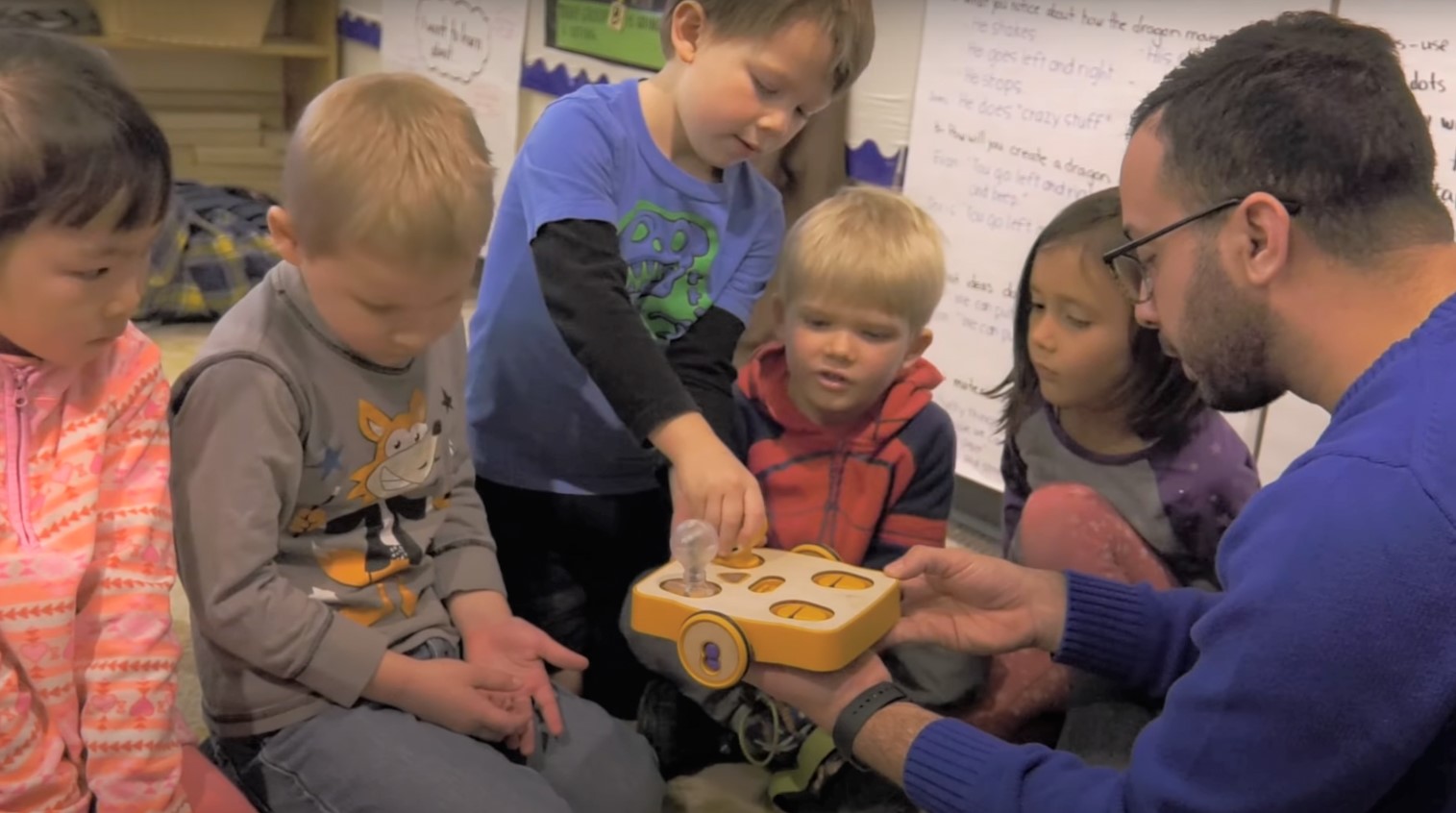How Robots Connect Students, Families, and Educators
In Idaho, placing robots in libraries is a playful, hands-on strategy to introduce families to key foundational concepts that create strong learning supports for young children

As a long-time early childhood educator, I've learned to view children as “born ready.” Yes, neuroscience reveals they are learning at birth! But they do it alongside responsive, caring adults. Parents are the first and most significant teachers of their children's lives. When educators rise to partner with parents from the earliest stages to augment learning opportunities, students receive the best educational foundation to succeed throughout their school journey.
In my current role as the early STEM education consultant for the Idaho STEM Action Center, I collaborate with early childhood programs and libraries to make access to STEM tools free to teachers and librarians as well as parents and guardians who invite young children to enter the world of STEM through the daily routines of life.
Here’s how we create a partnership around the fact that children are born whole people who are curious, capable, and competent—and why it matters.
Connecting with Caregivers
I believe learning is a story of connections. In my work, we prioritize children's connection with caregivers as the most significant driver of all learning. When children are supported by safe, responsive relationships with these caregivers, their inborn curiosity compels them to interact with and make sense of the world in meaningful ways. The digital age in which we live offers an absolute plethora of learning opportunities in the world of STEM. When we honor play as the children's work and offer open-ended materials and opportunities to express themselves through that, children can create connections to make meaning within their own lives.
Young children approach learning with a growth mindset, unhindered by thoughts about what they can and can’t do, according to one study. They have no preconceived notions that STEM subjects are too hard for them. While they are born into an era in which amazing opportunities abound, children are sometimes held back by a lack of access to such opportunities because they may be under the care of adults who may feel intimidated or even unqualified to support children’s exploration of science, technology, engineering, and math.
Overcoming STEM Hesitancy
One of the major causes of STEM hesitancy is a lack of foundational knowledge. The good news is that adults don’t have to be experts to support children’s STEM learning. The Idaho STEM Action Center has partnered with the Idaho Commission for Libraries to host book clubs across the state for librarians and educators interested in overcoming their own STEM hesitancy to explore how young children can engage in computational thinking.
The book clubs focus on Dr. Marina Umaschi Bers’ Coding as a Playground, which discusses the idea of coding offered as an open-ended “playground” experience versus a limited “playpen” experience. When they approach coding as a playful exploration, young students can engage as producers—and not merely consumers—of technology. Coding becomes another language of expression through which they are free to explore and interact with one another. Dr. Bers has made developmentally appropriate coding opportunities available to young children by co-creating the ScratchJr coding program and the KIBO Robot kit.
Tools and ideas to transform education. Sign up below.
The book club collaboration allows both organizations to disseminate KIBO robots to select libraries and early childhood programs statewide. Having screen-free, developmentally appropriate STEM robots available allows teachers and parents to learn alongside children in a hands-on and playful way.
Another key step in helping educators, parents, and children overcome STEM hesitancy is reframing failure. When I was running a STEM preschool years ago, a boy named Finnegan would purposely put together a marble run in ways that the marble had no chance of getting to the end of the track. My first inclination was to help correct what looked like a mistake. However, when I took a step back to observe his play, I noticed he wanted to see how many ways his marble run wouldn’t work.
He would say out loud, “I know this is not going to work.” He took a researcher’s approach to finding how something works. As adults, we tend not to take the time to see all the ways something does not work because it can be discouraging and time-consuming. In their play, children approach hands-on STEM activities as paths of discovery rather than “failure.”
Connecting STEM to Personal Development and Literacy
While the goal of early coding activities in Idaho is to help young students grasp powerful computer science concepts such as sequencing and algorithms, we’re looking at STEM as more than a means to build skills for the workforce. Students who collaborate on programming robots are cultivating character traits such as generosity, patience, and perseverance while practicing managing their own behavior.
KIBO, which is programmed using a series of wooden blocks that children put together on the floor, is one of my go-to STEM tools to encourage computational thinking through a whole-body sensory activity. So many positive connections take place in both mind and body that might not happen if a child were seated passively in front of a device.
When it comes to offering young students the best STEM tools, materials that are open-ended and neutral in color allow them to stay immersed in discovery and exploration for longer. Children themselves create if/then conditionals as they invent worlds in their coding playground.
Dr. Bers also describes coding as another language, a literacy. I recently read research highlighting that when children use tools when learning a new task, their ability to use more sophisticated syntax and grammar increases. In fact, the area of the brain that's being engaged when they're using tools is the same area where complex language takes place. It’s an exciting possibility that using a tool such as robots could connect children to deeper engagement in literacy in multiple ways.
By providing our libraries, enrichment centers, and after-school programs access to KIBO and other hands-on tools, we're allowing educators and parents to check out STEM resources, to have them in their homes, and learn alongside the children. When we give families hands-on materials—even something as simple as blocks—we equip them to augment the lessons educators are teaching and empower an iterative learning folded into the daily routines of life. This sequential process connects engineering, coding, and language. It's a multi-sensory learning experience that’s self-sustaining, collaborative, and fun.
Heather Lee is the early STEM education consultant for the Idaho STEM Action Center and the school readiness project director for Idaho AEYC.
